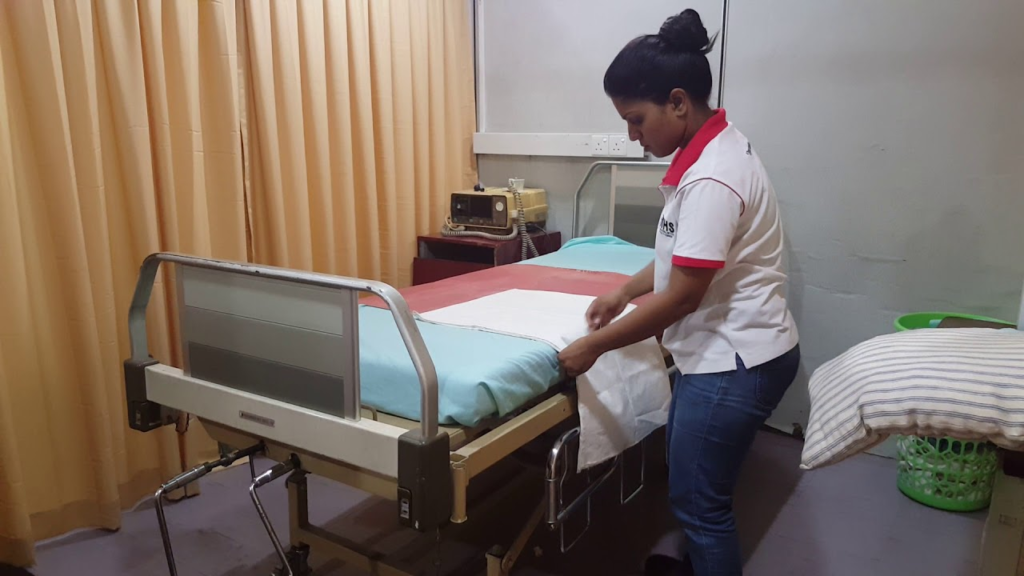GDA Nursing Class Notes 25
BED MAKING PRACTICAL

Bed making in a healthcare setting is a systematic and important procedure that involves preparing and arranging a bed to ensure the patient’s comfort, hygiene, and safety. Proper bed making is essential to prevent infections, pressure ulcers, and promote overall well-being. Below is a step-by-step guide for making a bed in a healthcare setting:
Before You Begin:
- Gather all necessary supplies, including clean bed linens (top sheet, fitted sheet, and pillowcase), waterproof or protective pads (if used), and any additional blankets or covers.
- Ensure that you have a clean and sanitized work area, and wash your hands thoroughly with soap and water or use hand sanitizer.
- Communicate with the patient or resident, if present, to inform them about the bed-making process and address any preferences or concerns they may have.
- Ensure that the room is well-ventilated and at a comfortable temperature for the patient.
Steps for Making a Bed:
- Clear the Bed:
- If the patient is in the bed, kindly ask them to sit up if possible or assist them in getting out of bed to allow for the bed-making process.
- Remove any personal items, soiled linens, or debris from the bed. Place soiled linens in a designated laundry bag or hamper for proper disposal or washing.
- Inspect the Mattress:
- Check the mattress for any signs of damage, such as tears, stains, or sagging. Report any issues for maintenance or replacement.
- Protective Cover or Pad (if used):
- If a waterproof or protective cover or pad is used, ensure it is in good condition and properly positioned on the mattress.
- Bottom Sheet or Fitted Sheet:
- Start with the bottom sheet or fitted sheet. Place it over the mattress, ensuring that it is centered and covers the entire bed.
- Tuck the sheet securely under the mattress on all sides, smoothing out any wrinkles or creases and create miter corner.
- Mackintosh:
- Draw Sheet:
- Top Sheet (if used):
- Place the top sheet over the bottom sheet with the top edge aligned with the head of the mattress.
- Ensure the sheet is centered and covers the entire bed, with even overhang on both sides.
- Pillowcases and Pillows:
- Insert pillows into clean pillowcases and fluff them before placing them at the head of the bed.
- Align the pillows neatly.
- Blankets and Bedspreads:
- Layer blankets and bedspreads as needed for warmth and comfort.
- Ensure they are evenly spread over the bed.
- Final Adjustments:
- Smooth out any wrinkles, adjust the positioning of pillows and linens, and make sure the bed is aesthetically pleasing.
- Bedside Items:
- Arrange any personal items or belongings on the bedside table or within reach.
- Wash Hands: After completing the bed-making process, wash your hands again to maintain hygiene.
Bed making should be performed with care, paying attention to the patient’s comfort and any specific instructions or preferences they may have. Additionally, maintaining cleanliness and infection control practices is crucial to prevent the spread of germs in healthcare settings.

